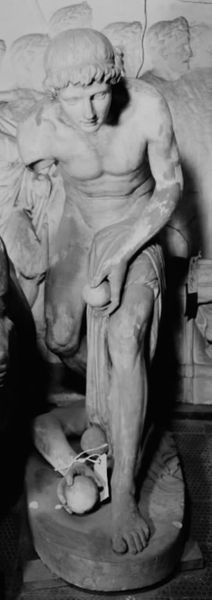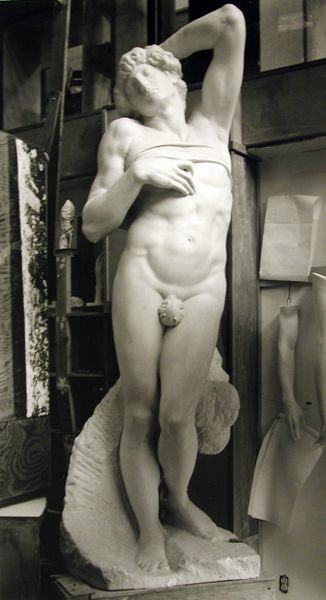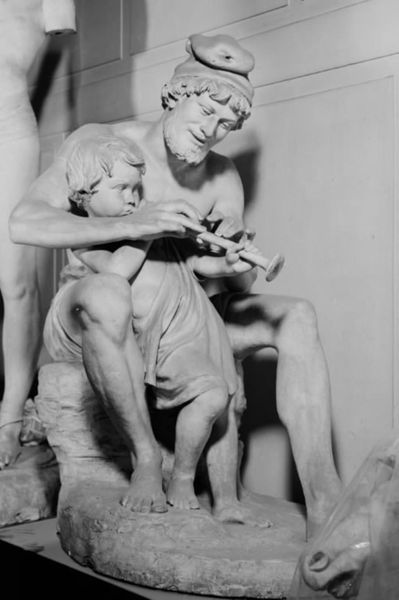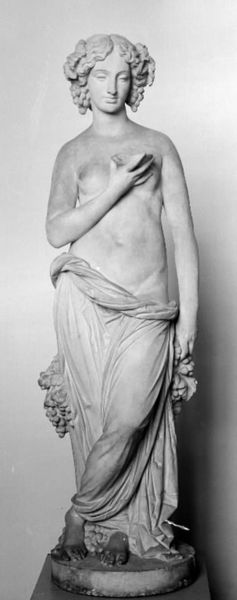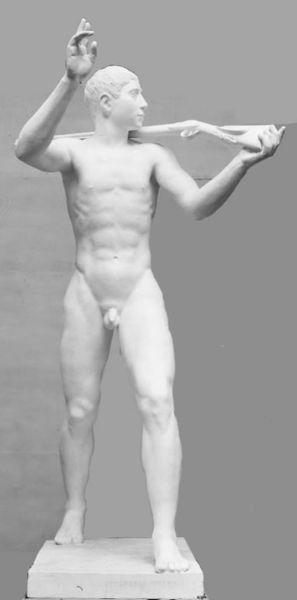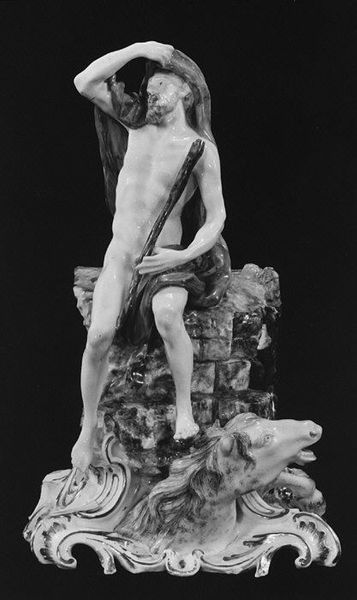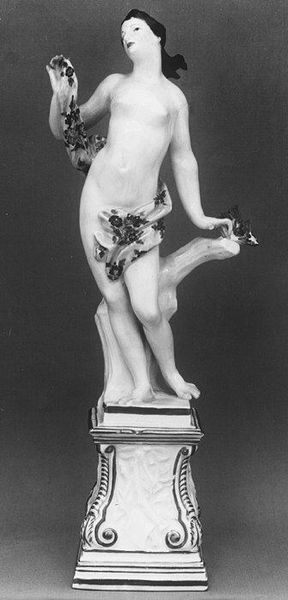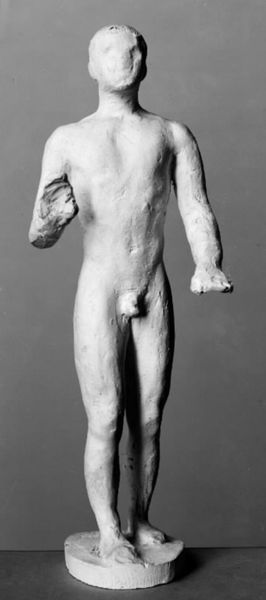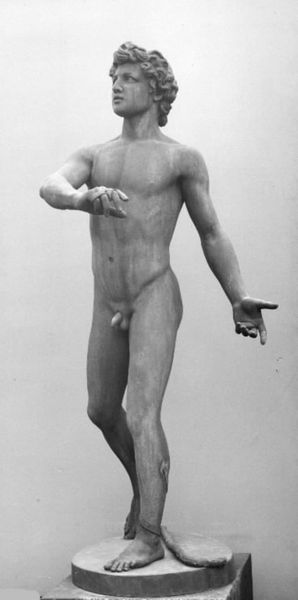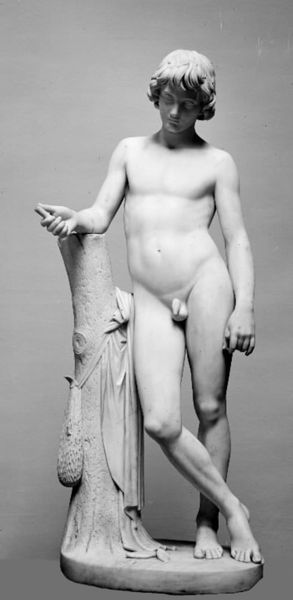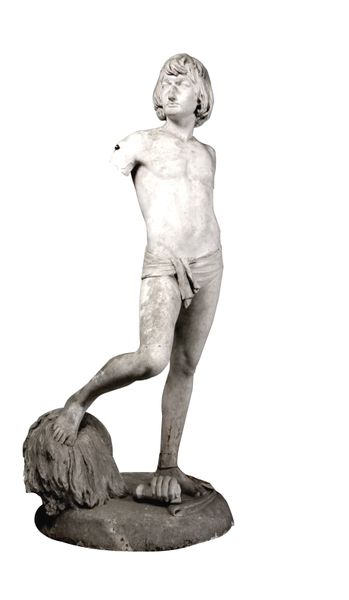
sculpture, marble
#
portrait
#
statue
#
sculpture
#
classical-realism
#
black and white format
#
figuration
#
ancient-mediterranean
#
sculpture
#
history-painting
#
marble
#
nude
#
statue
#
monochrome
Dimensions: 162 cm (height) x 81 cm (width) x 67 cm (depth) (Netto)
Editor: We're looking at "Kain, stående med et skind over skulderen," a marble sculpture from 1861 by F.C. Stramboe. I'm struck by the figure's downcast gaze and the raw emotion conveyed. How do you interpret this work, particularly within its historical context? Curator: This piece presents us with an opportunity to consider the complexities of guilt, responsibility, and representation. As a depiction of Cain, the sculpture inevitably evokes the biblical narrative of fratricide – a foundational story rife with moral and social implications. Considering its creation in 1861, what societal anxieties surrounding morality and transgression might Stramboe be engaging with? Editor: So, beyond the immediate biblical reference, the sculpture could be reflecting broader concerns of the time? Curator: Precisely. The 19th century was a period of significant social upheaval and changing moral codes. This Cain isn’t simply a representation of biblical sin; he is a man burdened by the weight of his actions, which mirrors evolving social attitudes toward crime, punishment, and individual accountability. How does the use of marble, a classical material, contribute to this dialogue? Editor: It’s interesting that you bring up the classical nature of the marble material; I was sort of just thinking of this guy as some random "brooding man" type of statue. So its interesting that the marble makes it about CLASSICAL concepts of guilt and society too. Curator: Exactly! Marble lends the figure an air of timelessness, aligning the anxieties of Stramboe’s era with enduring questions about human nature. This work invites us to explore the intersection of biblical narrative, societal anxieties, and artistic representation. Editor: This has certainly given me a richer perspective on how to read not only this piece, but art in general as connected to both historical context AND contemporary ideas. Curator: Indeed. Understanding art means engaging with the many layers of history, society, and the ever-evolving human condition.
Comments
No comments
Be the first to comment and join the conversation on the ultimate creative platform.
